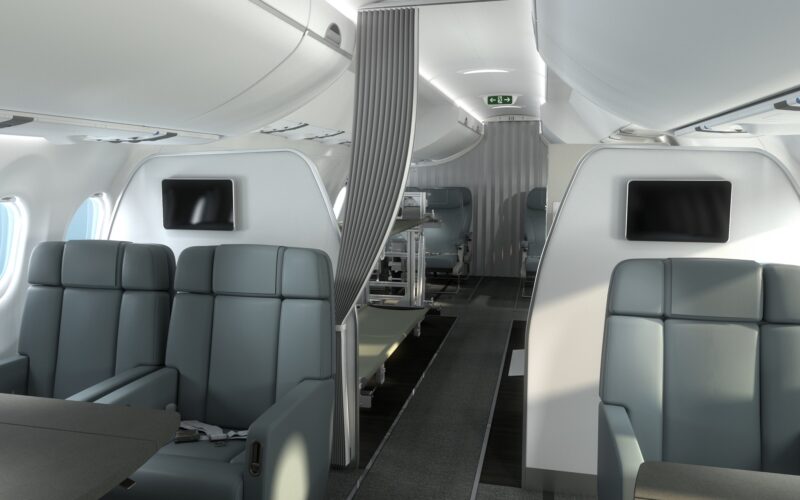Lufthansa Technik Reveals Cabin Configuration for A220 ACJ Private Jet

Lufthansa Technick, a Lufthansa Group company, has unveiled a governmental cabin layout for the Airbus Corporate Jet (ACJ) TwoTwenty, an aircraft based on the Airbus A220.
The new design is specifically aimed at government and military operators that need greater functionality from the interior and perform various specialized tasks with their aircraft, such as medical evacuations (MedEvac).
“With its cabin dimensions, the ACJ TwoTwenty represents an optimal platform for the most diverse manifestations of future government and special mission aircraft, at the price of significantly smaller and less flexible aircraft types,” said Wieland Timm, the Head of Sales for Special Mission Aircraft at Lufthansa Technik. “With our expertise both in the field of VIP completion but also in the field of special mission modifications, we are able to reflect even the high demands of governments or armed forces in this type of aircraft, and to do so highly individually.”
Lufthansa Technik said that it could equip the A220-based VIP aircraft with a layout for working (two people), conferencing (seven people), and sleeping areas, which would ensure “a high level of comfort and functionality as well as security and privacy”.
Furthermore, the company’s standard ACJ TwoTwenty configuration includes 12 Premium Economy class and 20 Economy Class seats, with a total of 41 passengers being able to travel onboard the aircraft. That is “significantly more than on conventional business jets at comparable prices”.
A MedEvac configuration includes eight stretchers, or two next-generation Patient Transport Units (PTU NG) used for intensive care patients, as well as the option to include mixed stretcher/PTU NG configurations.
With additional fuel tanks added onto the ACJ TwoTwenty compared to the Airbus A220, the Lufthansa Technik-outfitted VIP aircraft can travel up to 5,650 nautical miles (10,460 kilometers).
The company will reveal more renderings of the cabin later in 2023, a spokesperson confirmed in an email to AeroTime.
